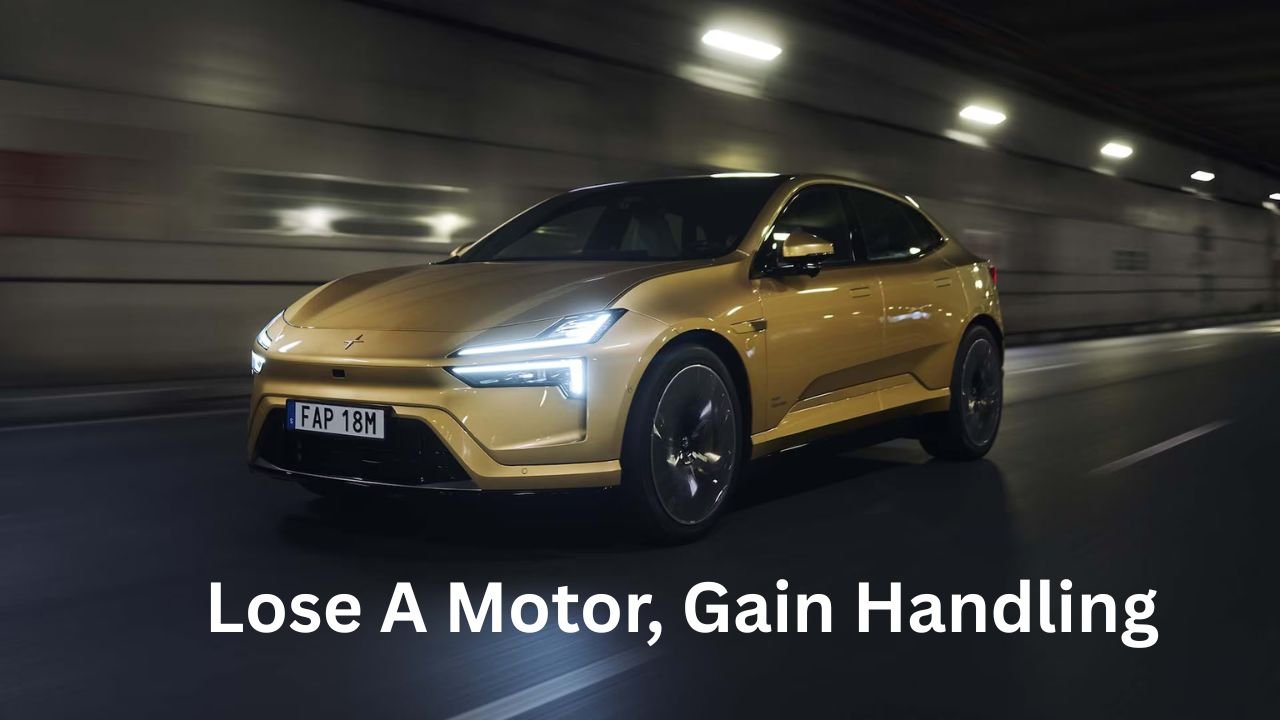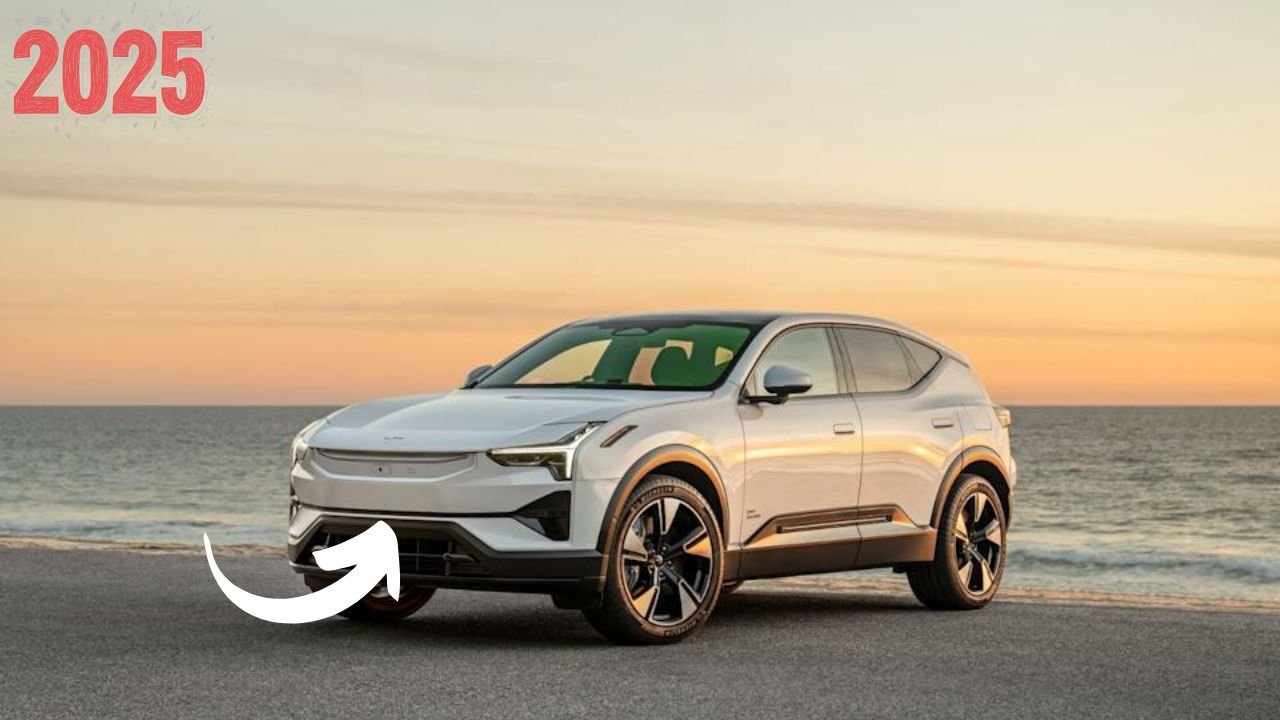To the letter, this is what has been done with the new single-motor variant of the Polestar 3 2025. The initial MSRP is successfully reduced to $67,500, which is $5,900 less than the dual-motor variant. Not only the single motor saves money, but it should have an additional range of 35 miles because it uses the same 111-kWh battery pack as the dual-motor.
However, this time the company has upgraded the rear motor to a 220-kW unit, whereas the dual-motor used an 180-kW unit. Definitely a win-win, but there’s so much more to the single-motor story that, in total Polestar fashion, makes all sorts of sense.
Polestar invited TopSpeed out to the Malibu area to drive the new Polestar 3 single motor back to back with a dual motor variant halfway into the drive. The Polestar team has very cleverly incorporated special waypoints on the map specifically for our multi-stop drive, set as preset buttons within the car’s infotainment.
Our first stop: coffee at The Old Place. If you know, you know.
Accompanying the most updated and precise information possible, the source for this article has been drawn from various manufacturer websites and an official first drive press launch of the Polestar 3 single motor.
American-built motor show away with the Polestar 3 to go track and road comparison and try to realize how it differentiates from the Volvo sibling.
Lose A Motor, Gain Handling
No, the Polestar 3 is not a sports vehicle in and of itself. But to be fair, it was a company that began in motorsport/tuning activities. In a similar way, the company’s branding of a sporting intent attribute is in the working prototype of every vehicle engineered by Polestar.
Handling is probably the most important driving characteristic for Polestar. Very openly, the engineers convey how much hard work goes into tuning every vehicle to provide as much poise out on the road as possible.
There’s no question that a weight reduction of roughly 400 pounds on the Polestar 3 would be a plus for handling, according to basic physics. Hence, extra weight removal off the front axle allows better management of weight transfer and load infliction with higher g-forces. With that context, less weight up front combined-with-remember, it’s rear-wheel-drive-gives Polestar everything needed to put together a sportscar.

Back To Basics, Because The Basics Work
Polestar is increasingly nerding out on ways to make their cars better by just simply doing their art. The single-motor Polestar 3 loses the adaptive air suspension system for a more conventional static set-up. After all, Polestar has quietly become an industry authority on how to do good suspensions.
And this one shows it-The Polestar 3 single-motor is more precise and better controlled than the faster and heavier dual-motor version. Rather than one bump affecting all four corners of the car while it computes how to manage the situation, the car deals with an individual bump at a time. Polestar has been able to work with normal springs and dampers without overly compromising ride quality due to weight savings.
By no means an indication of its rather paltry 299 horsepower, the Polestar 3 single motor doesn’t really feel that slow because it is considerably lighter, and because, as the driver, you receive more information through the chassis.
From a standing start, it goes to 60 mph in a little over 7.5 seconds, although you would swear it was at least a second quicker. Plenty of poke for regular commuting in this segment, which makes it quite fun taking a scenic drive or even putting all that superior handling into practice if the intent were to really use its power.

Of course, there is still body roll. But in an altogether easier and more progressive fashion without the kind of imbalance that would be caused by two motors. It is as Miata as it could get. And it is a known fact that no one actually seems to complain about the handling of Mobiles.
Polestar chose to develop the lightweight RWD characteristics as a part of the driving experience, leveraging the strengths such a configuration brings along with suspension tuning.
There are numerous differences that are conspicuous to the naked eye in cases of most EVs, with the only variable being their respective powertrain options. While the more sporty versions in the past might have been given some better aero or updated hardware parts that you can actually see, that narrative is no longer valid with EV philosophy.
Today, the best possible aerodynamics are called for on every variance. Thus, in most cases, the best hardware will be usually an optional or standard fit across model ranges, and with respect to that, the Polestar 3 is no different. The same colors, from the dual-motor to the single-motor variant, are on offer inside and outside.
Seats and the steering wheel share the same design language, and interior layout is homogenous across both. So too on the outside one finds a common palette of paint, wheels, and aero-wise toys that made Polestar 3 glide through the space.
Post not found.
Minimal Differences
Almost everything on the exterior of a dual-motor car remains on the single-motor version. Outside appearance is a subjective topic all its own, but I miss the gold brakes. That signature accent color goes a long way in making Polestar look more different from other EVs, and should definitely be included, since every Polestar is designed as an example in performance.
That’s the only thing I spotted on the exterior, though. The single-motor variant’s infotainment system deletes suspension settings options; it’s a one-size-fits-all tune-up. Gone are the “suspension feel” and the “raised suspension/hill descent” modes of the dual-motor. Another major delete would be the power delivery option. Poly car does not however restrict the available full power- entirely available all the time in the single motor.
Less money, better driving, longer reach, and lighter weight. This is more or less the recipe, and my favorite conclusion regarding single-motor Polestar 3 versus its pricier, less-confidence-inspiring twin-motor variant.
FAQS:
What would Polestar 3 Single Motor entail?
Rear-wheel drive marriage gives the Polestar 3 Single Motor 2025 an edge over the dual motor version in costs and efficiency, yet Polestar maintains its signature performance and design.
What would be the Power of Horse of the single motor version?
Polestar 3 Single Motor produces around 295 horsepower and 361 lb-ft of torque; thus, it maintains a kind of happy medium in everyday drivability and spirited performance.

